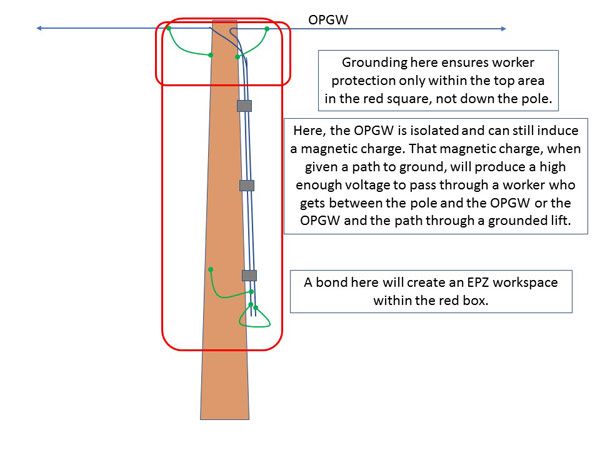Tag: Q & A
June-July 2023 Q&A
Written by Jim Vaughn, CUSP on . Posted in Q & A.
August – September 2022 Q&A
Written by Jim Vaughn, CUSP on . Posted in Q & A.
April – May 2022 Q&A
Written by Jim Vaughn, CUSP on . Posted in Worksite Safety, Q & A.
February – March 2022 Q&A
Written by Jim Vaughn, CUSP on . Posted in Worksite Safety, Q & A.
December 2021 – January 2022 Q&A
Written by Jim Vaughn, CUSP on . Posted in Worksite Safety, Q & A.
October-November 2021 Q&A
Written by Jim Vaughn, CUSP on . Posted in Worksite Safety, Q & A.
August-September 2021 Q&A
Written by Jim Vaughn, CUSP on . Posted in Worksite Safety, Q & A.
June-July 2021 Q&A
Written by Jim Vaughn, CUSP on . Posted in Worksite Safety, Q & A.
April-May 2021 Q&A
Written by Jim Vaughn, CUSP on . Posted in Worksite Safety, Q & A.
February-March 2021 Q&A
Written by Jim Vaughn, CUSP on . Posted in Worksite Safety, Q & A.
December 2020-January 2021 Q&A
Written by Jim Vaughn, CUSP on . Posted in Worksite Safety, Q & A.
October-November 2020 Q&A
Written by Jim Vaughn, CUSP on . Posted in Worksite Safety, Q & A.
August-September 2020 Q&A
Written by Jim Vaughn, CUSP on . Posted in Worksite Safety, Q & A.
June-July 2020 Q&A
Written by Jim Vaughn, CUSP on . Posted in Worksite Safety, Q & A.
April-May 2020 Q&A
Written by Jim Vaughn, CUSP on . Posted in Worksite Safety, Q & A.
February-March 2020 Q&A
Written by Jim Vaughn, CUSP on . Posted in Worksite Safety, Q & A.
December 2019-January 2020 Q&A
Written by Jim Vaughn, CUSP on . Posted in Worksite Safety, Q & A.
October-November 2019 Q&A
Written by Jim Vaughn, CUSP on . Posted in Worksite Safety, Q & A.
August-September 2019 Q&A
Written by Jim Vaughn, CUSP on . Posted in Worksite Safety, Q & A.
June-July 2019 Q&A
Written by Jim Vaughn, CUSP on . Posted in Worksite Safety, Q & A.
April-May 2019 Q&A
Written by Jim Vaughn, CUSP on . Posted in Worksite Safety, Q & A.
February-March 2019 Q&A
Written by Jim Vaughn, CUSP on . Posted in Worksite Safety, Q & A.
December 2018-January 2019 Q&A
Written by Jim Vaughn, CUSP on . Posted in Worksite Safety, Q & A.
October-November 2018 Q&A
Written by Jim Vaughn, CUSP on . Posted in Worksite Safety, Q & A.
August-September 2018 Q&A
Written by Jim Vaughn, CUSP on . Posted in Worksite Safety, Q & A.
June-July 2018 Q&A
Written by Jim Vaughn, CUSP on . Posted in Safety Management, Worksite Safety, Q & A, Grounding.
April-May 2018 Q&A
Written by Jim Vaughn, CUSP on . Posted in Worksite Safety, Q & A.
February-March 2018 Q&A
Written by Jim Vaughn, CUSP on . Posted in Worksite Safety, Q & A.
December 2017 Q&A
Written by Jim Vaughn, CUSP on . Posted in Worksite Safety, Q & A.
October 2017 Q&A
Written by Jim Vaughn, CUSP on . Posted in Worksite Safety, Q & A.
August 2017 Q&A
Written by Jim Vaughn, CUSP on . Posted in Safety Management, Worksite Safety, Q & A, Grounding.
June 2017 Q&A
Written by Jim Vaughn, CUSP on . Posted in Safety Management, Worksite Safety, Q & A, Equipment Operations, Grounding.
April 2017 Q&A
Written by Jim Vaughn, CUSP on . Posted in Safety Management, Worksite Safety, Q & A.
February 2017 Q&A
Written by Jim Vaughn, CUSP on . Posted in Safety Management, Leadership Development, Worksite Safety, Q & A, Equipment Operations.
December 2016 Q&A
Written by Jim Vaughn, CUSP on . Posted in Safety Management, Worksite Safety, Q & A, Equipment Operations, Grounding.
October 2016 Q&A
Written by Jim Vaughn, CUSP on . Posted in Safety Management, Worksite Safety, Q & A, Equipment Operations.
August 2016 Q&A
Written by Jim Vaughn, CUSP on . Posted in Safety Management, Worksite Safety, Q & A, Equipment Operations.
June 2016 Q&A
Written by Jim Vaughn, CUSP on . Posted in Safety Management, Worksite Safety, Q & A, Equipment Operations, Grounding.
April 2016 Q&A
Written by Jim Vaughn, CUSP on . Posted in Safety Management, Worksite Safety, Q & A.
February 2016 Q&A
Written by Jim Vaughn, CUSP on . Posted in Safety Management, Worksite Safety, Q & A, Grounding.
December 2015 Q&A
Written by Jim Vaughn, CUSP on . Posted in Safety Management, Worksite Safety, Q & A, Equipment Operations, Grounding.


